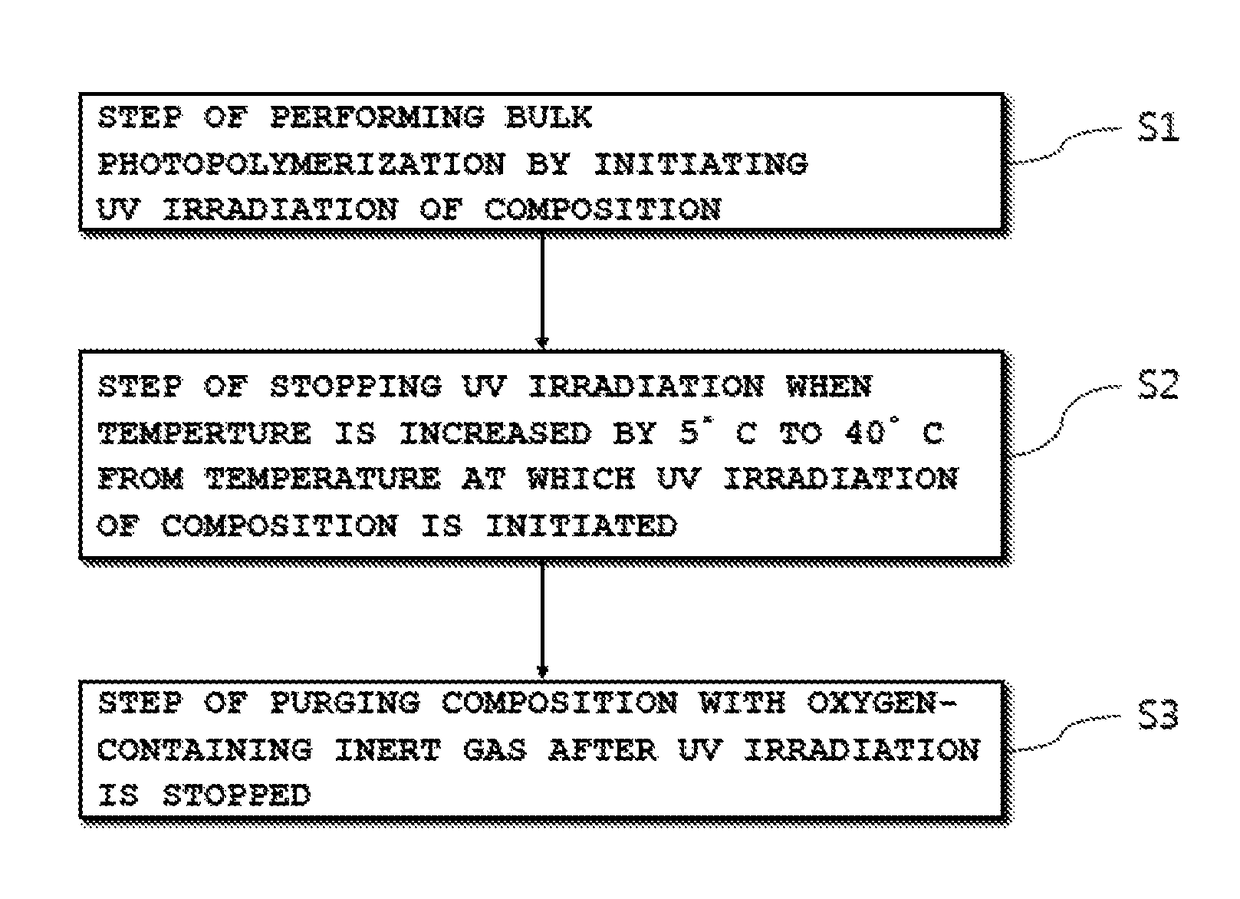Acrylic syrup preparation method and acrylic syrup
a technology of acrylic syrup and preparation method, which is applied in the direction of coatings, etc., can solve the problems of large amount of waste water generated, complicated addition process, and high cost, and achieve excellent environmental protection, excellent productivity, and excellent storage stability.
- Summary
- Abstract
- Description
- Claims
- Application Information
AI Technical Summary
Benefits of technology
Problems solved by technology
Method used
Image
Examples
example 1
[0081]A composition was prepared by mixing 100 parts by weight of an acrylic monomer including ethylhexyl acrylate (EHA) and acrylic acid (AA) and 0.05 part by weight of a photoinitiator IRG 184, the composition was formed at 25° C., and then the composition was purged with nitrogen for 1 hour while being stirred. Subsequently, a UV irradiation of 40 mW / cm2 onto the composition was initiated by using a metal halide lamp while continuously carrying out the stirring and purging, and the temperature at which the UV irradiation was initiated was 25° C. When the temperature was increased by 15° C. from the time point when the temperature at which the UV irradiation was initiated while the temperature of the composition was continuously measured, the UV irradiation was stopped and the nitrogen purging was also stopped. Subsequently, an acrylic syrup was prepared by purging the composition with an oxygen-containing inert gas (oxygen: 15 vol % and nitrogen: 85 vol %) until the time point wh...
experimental examples
Experimental Example 1: Conversion Rate
[0088]Measurement method: 10.000 g of each of the acrylic syrups in Example 1 and Comparative Examples 1 to 4 was added dropwise to methanol, the acrylic polymer precipitated in the methanol was filtered, and then dried under the conditions of 60° C. and 24 hours in a vacuum oven, and subsequently, the mass of a solid content dried and formed was measured. The conversion rate was calculated according to the following Equation 1 by using the mass of the solid content.
Conversion rate (%)=M2 / M1×100 [Equation 1]
[0089]In Equation 1, M1 is a mass of the acrylic syrup added dropwise to methanol, and M2 is a mass of the solid content dried and formed.
experimental example 2
[0090]Measurement method: The viscosity was measured by using a viscometer (Brookfield, DV-II+ Pro) under the conditions of 20° C.
PUM
| Property | Measurement | Unit |
|---|---|---|
| temperature | aaaaa | aaaaa |
| temperature | aaaaa | aaaaa |
| temperature | aaaaa | aaaaa |
Abstract
Description
Claims
Application Information
 Login to View More
Login to View More - R&D
- Intellectual Property
- Life Sciences
- Materials
- Tech Scout
- Unparalleled Data Quality
- Higher Quality Content
- 60% Fewer Hallucinations
Browse by: Latest US Patents, China's latest patents, Technical Efficacy Thesaurus, Application Domain, Technology Topic, Popular Technical Reports.
© 2025 PatSnap. All rights reserved.Legal|Privacy policy|Modern Slavery Act Transparency Statement|Sitemap|About US| Contact US: help@patsnap.com

